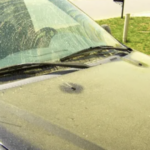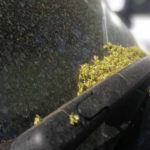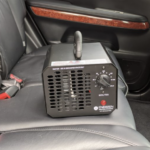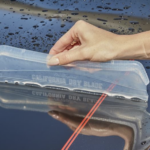How to Keep Your Car’s Exterior Looking New in Florida’s Climate
Why Florida’s Climate is Tough on Car Exteriors
Florida drivers know how challenging it can be to maintain a car’s exterior. Between intense UV rays, frequent rain, and high humidity, vehicles are constantly exposed to elements that can fade paint, cause water spots, and lead to oxidation. The coastal air in areas like Daytona Beach and New Smyrna Beach also contributes to rust and corrosion, making regular maintenance essential.
The combination of sun and moisture leads to paint deterioration faster than in other parts of the country. Without proper care, cars parked in open areas around Orlando, Kissimmee, and Winter Park can start showing signs of wear within just a few years.
Best Practices for Maintaining Your Car’s Paint
Wash Your Car Regularly
Frequent washing is the easiest way to keep contaminants from sticking to the paint and causing damage. Road debris, pollen, and rainwater carry pollutants that, if left on the surface, can create permanent stains or lead to clear coat failure.
Washing at least once a week is recommended, especially after heavy rain or driving through areas with a lot of construction, such as downtown Orlando or Lake Nona.
- Use a pH-balanced car shampoo to avoid stripping wax or sealant.
- Always rinse the car thoroughly before scrubbing to prevent scratches.
- Wash in the shade to avoid water spots caused by quick evaporation.
- Dry with a microfiber towel or air blower to prevent streaks.
For cars parked near trees in suburban areas like Maitland or Altamonte Springs, extra care is needed to remove tree sap and bird droppings, which can permanently etch into the paint.
Apply Wax or Paint Sealant for Protection
A layer of wax or sealant acts as a shield against UV rays, rain, and road grime. Florida’s sun is especially harsh, and without protection, the clear coat can start fading within a few years.
- Traditional wax lasts about four to six weeks and gives the paint a warm shine.
- Paint sealants offer longer protection, typically lasting four to six months.
- Ceramic coatings provide the best long-term defense, lasting up to five years with proper maintenance.
For those who live in areas near lakes or marshlands, like Lake Mary or St. Cloud, a good sealant can also help prevent hard water spots from forming after rain showers.
Preventing Water Spots and Hard Water Stains
Water spots are a major issue in Florida, especially for cars that are frequently exposed to rain or sprinkler systems. The minerals in tap water leave behind deposits that etch into the clear coat, making them difficult to remove.
To prevent water spots:
- Dry the car immediately after washing or rain exposure.
- Avoid parking near sprinklers, which spray hard water onto the vehicle.
- Use a water filtration system for washing to reduce mineral buildup.
- Apply a ceramic coating, which makes it harder for water spots to bond to the paint.
In areas like Clermont and Windermere, where many homes have automatic sprinkler systems, being mindful of where you park can prevent repeated exposure to hard water deposits.
Keeping Black Trim and Plastic from Fading
Florida’s heat doesn’t just affect paint—it also causes plastic trim and rubber seals to fade, crack, and become brittle over time. This is particularly noticeable on SUVs and trucks with black plastic fender flares or bumpers.
- Apply a plastic restorer to faded trim to bring back the deep black color.
- Use a trim sealant to protect against future fading.
- Park in the shade or use a car cover to reduce UV exposure.
- Avoid using dish soap or harsh detergents that strip oils from plastic surfaces.
For those living in sunny areas like Oviedo or Sanford, taking extra precautions to protect plastic trim will keep the vehicle looking newer for longer.
Protecting Against Rust and Corrosion
While rust is less common in Florida than in northern states, vehicles near the coast or in humid areas are still at risk. Salt air, especially in places like Cocoa Beach or Daytona Beach, speeds up the corrosion process, particularly on exposed metal parts.
To prevent rust:
- Wash the undercarriage regularly to remove salt and dirt.
- Apply a rust-inhibiting spray to vulnerable areas.
- Check for small paint chips and touch them up before rust can form.
- Keep door seals clean and dry to prevent trapped moisture.
For residents near Kissimmee or Apopka, where frequent rain and flooding can leave cars sitting in standing water, checking for early signs of rust is a good habit to maintain.
Choosing the Best Parking Spots to Reduce Damage
Where a car is parked has a significant impact on its longevity.
- Parking in the shade helps prevent UV damage, but trees can drop sap, pollen, and bird droppings.
- Covered parking or garages provide the best protection but may still expose vehicles to dust and moisture buildup.
- Parking away from high-traffic areas reduces the risk of door dings and scratches, especially in crowded places like The Mall at Millenia or Orlando International Airport.
For those without access to a garage, a high-quality car cover offers protection against both sun damage and debris.
How to Keep Wheels and Tires Looking New
Brake dust, road grime, and Florida’s frequent rain can make wheels look dirty in no time. Alloy and chrome wheels are especially prone to corrosion if they aren’t cleaned regularly.
- Use a dedicated wheel cleaner to break down brake dust.
- Apply a wheel sealant to make future cleanings easier.
- Clean tire sidewalls with a brush to remove dirt and prevent browning.
- Apply a tire dressing to keep rubber from drying out and cracking.
For those commuting through busy roads like I-4 or the 417 Expressway, where stop-and-go traffic causes excessive brake dust buildup, weekly cleaning helps maintain the shine of alloy or painted wheels.
When to Get a Professional Detailing Service
While regular at-home maintenance keeps a car in good shape, professional Orlando auto detailing provides deep cleaning and long-term protection that’s harder to achieve with DIY methods.
A full detailing service typically includes:
- Clay bar treatment to remove embedded contaminants.
- Machine polishing to eliminate swirl marks and restore gloss.
- High-quality wax or ceramic coating application.
- Deep cleaning of wheels, tires, and trim.
For those in high-end communities like Lake Nona or Windermere, where luxury vehicles are common, professional Orlando mobile detailing is a worthwhile investment to maintain resale value.
Final Thoughts
Florida’s climate presents unique challenges for keeping a car’s exterior looking its best. With regular washing, proper paint protection, and mindful parking habits, it’s possible to keep a vehicle’s finish looking new for years.
By following these maintenance tips, drivers in Orlando, Kissimmee, Winter Park, and surrounding areas can protect their cars from fading, water spots, and sun damage while preserving that showroom shine.
Leave a Comment Cancel Comment
Book Orlando Mobile Detailing
Search
Latest Post
-
 The Cost of Neglect: Why Regular Aircraft Detailing Saves Money in the Long Run
February 14, 2025
The Cost of Neglect: Why Regular Aircraft Detailing Saves Money in the Long Run
February 14, 2025
-
 Why Car Washes Aren’t Enough to Combat Pollen Damage
February 13, 2025
Why Car Washes Aren’t Enough to Combat Pollen Damage
February 13, 2025
-
 Orlando’s Pollen Problem: When Is It the Worst and How It Affects Your Car
February 13, 2025
Orlando’s Pollen Problem: When Is It the Worst and How It Affects Your Car
February 13, 2025
-
 How Ozone Generators Eliminate Stubborn Car Odors in Orlando
February 12, 2025
How Ozone Generators Eliminate Stubborn Car Odors in Orlando
February 12, 2025
-
 Why a Water Blade and Chamois Beat Towels Every Time!
February 9, 2025
Why a Water Blade and Chamois Beat Towels Every Time!
February 9, 2025
